
Derbesia marina
Green Sea Grapes, Sea Pearls, Silky Thread Weed
17 May 2022
Botany Bay, Juan de Fuca Strait, B.C., Canada.
Tide: 0.3 feet at 08:48 PDT (measured at Port Renfrew Tidal Station)
Conditions: Mix of sun and cloud, wind variable 5 to 10 km/hour, sea rippled, moderate westerly swell, humidity 70%, 9˚C.
Moon: Waning Gibbous (96.1%, 17 days); Previous Phase, Full Moon, 15 May 2022 at 9:14pm PDT: Next Phase, Third Quarter, 22 May 2022 at 11:43am PDT.
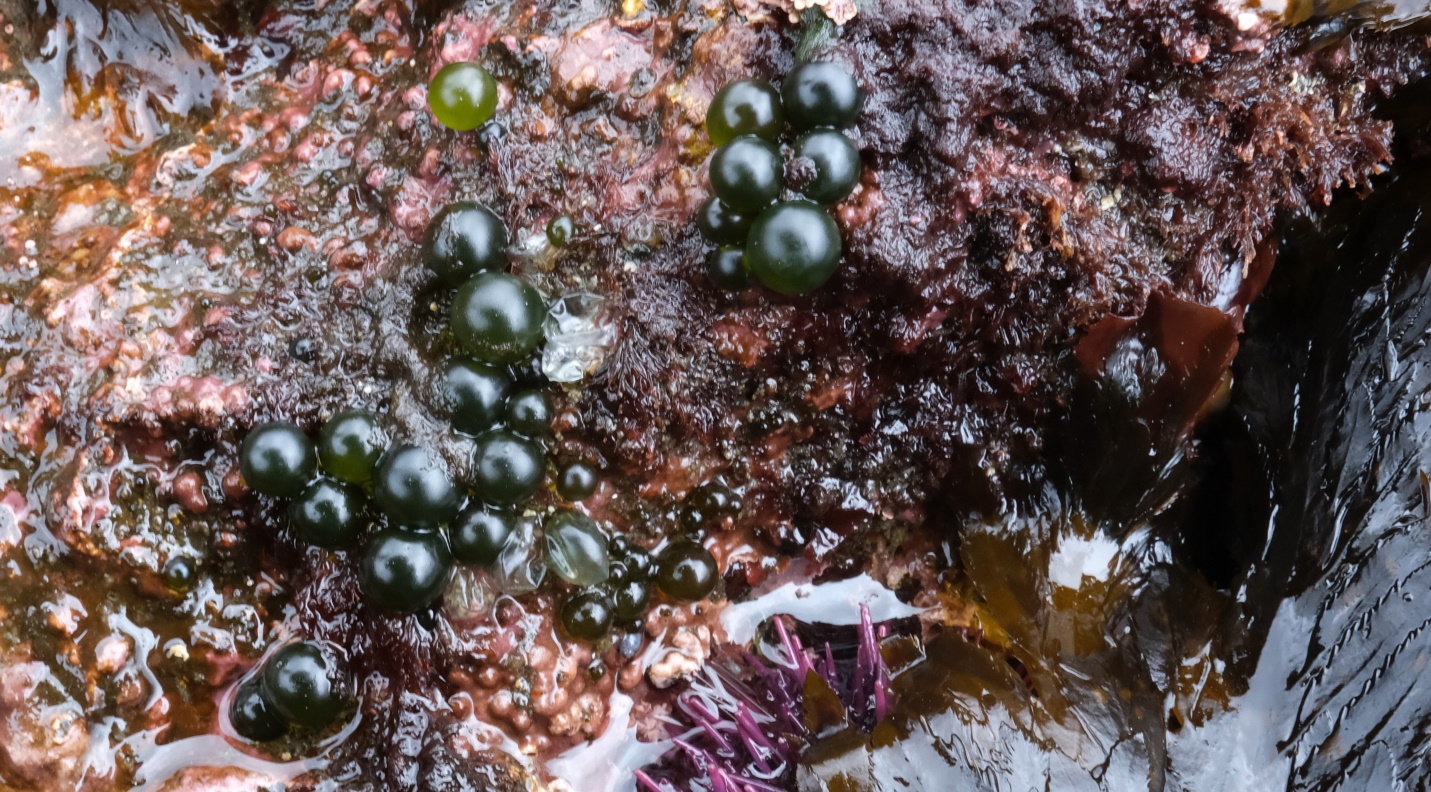
Figure 1: Several Derbesia marina algae are pictured growing in a loose cluster here. Some are very tiny, some are paler green, some a richer dark green and at least four are burst and drape from the substrate here in very pale green to almost transparent filmy pieces. Botany Bay, Juan de Fuca Strait, BC, Canada. May 17, 2022. Photo ID: 27213 ©Seaweedwhisperings.com
Person 1:
Shiny emeralds, popping out of the backdrop of pink coralline algae.
My first impression was that it has a soft and friendly demeanor.
I had a hard time choosing a pronoun or noun by which to address this seaweed; this was notable with this species. Shall I call it “it” or “they” or “Derbesia” or “Sea Pearls”? Somehow I hadn’t grasped enough of the characteristics/essence to comfortably settle on how to address it.
Somewhat shy, but Derbesia does like to be noticed.
The spherical form of Derbesia stands out against the majority of other seaweeds, which tend to be more two dimensional.
We found a few individuals that had burst.
Showy? Then quickly becoming ruined?
Wonder if they over inflate their ego, then burst when they can no longer maintain their poise and beauty.
Tiny jewels, simple and superficial.
I’m not particularly attracted to interact with Derbesia. I’d rather spend time with its neighbours.
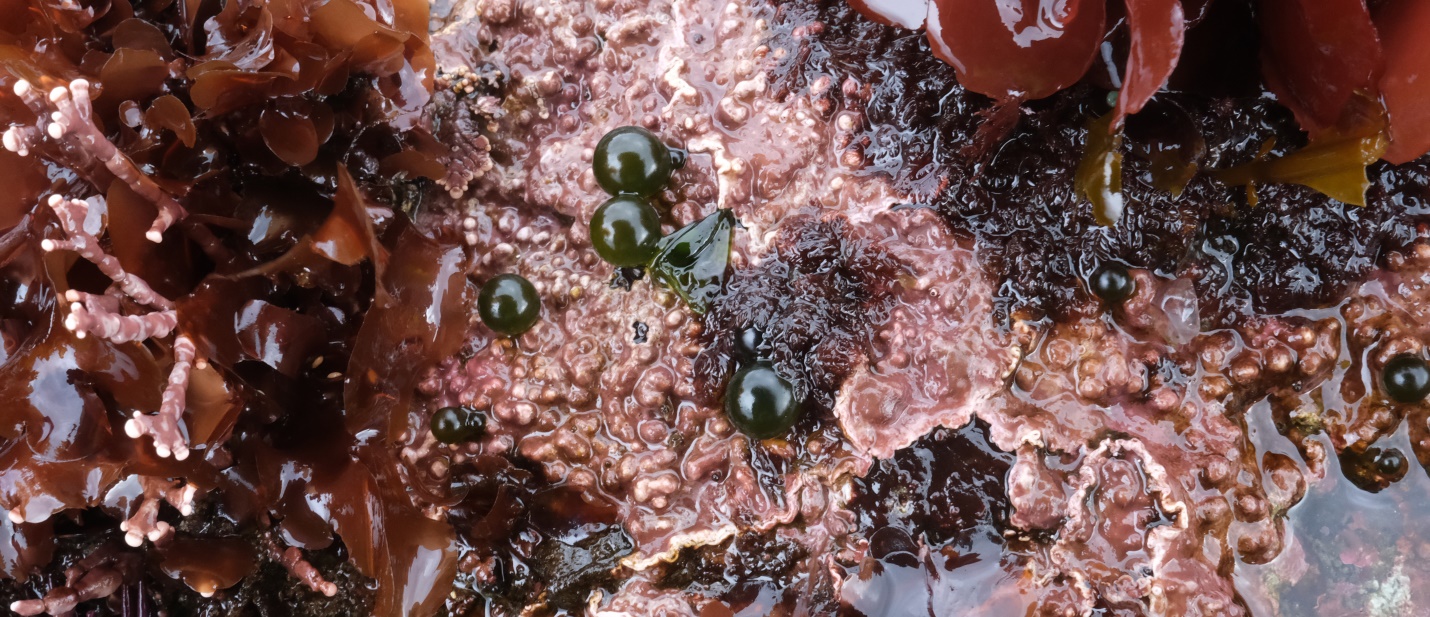
Figure 2: Derbesia marina grows epiphytically on coralline algae crusts such as is seen here; the coralline algae seems to be the perfect ‘host’ for this tiny green alga’s life purposes. Botany Bay, Juan de Fuca Strait, BC, Canada. May 17, 2022. Photo ID: 27214 ©Seaweedwhisperings.com
Person 2:
Finally! A low, low tide on a day with only gentle ocean swells in an area rich with coralline algae – and here we find you, Derbesia marina. Green, shiny spheres, ranging from small to tiny – it could be so easy to overlook you, yet you are very pleased to be noticed.
Your shape is that of perfect little spheres and I’m quite certain that delicate instruments could measure and prove this to be true. When I think about this, it makes me wonder what inner force shapes you in such a manner.
I touch you lightly, gently with my finger and you indent a bit; you also resist/push back a bit, like an inflated rubber bubble.
I was careful to not press too hard, for I think that could easily cause you to burst.
What enables you to push back against my touch? You are not a solid sphere, so what is that shiny shell of yours encapsulating, keeping in, enclosing? And does whatever that is exert a pressure like is seen in a balloon filled with warming gases?
Looking at a cluster of you in one location I am reminded of a ‘crop of blisters’.
What imperative, what inner drive causes you to grow as you do?
Is there stress within, a stress so omnipresent that you must expand in all directions, literally 360 degrees, in order to accommodate it with any comfort?
Can you cause great stress and irritation to others by your ‘blistery’ qualities?
Something about your look makes me think you are not long lived.
Such ‘perfection’ of shape combined with a outwardly expanding but contained interior force – this does create a lovely spherical green pearl, but it also seems like a physical expression that is not suited to endure past prime.
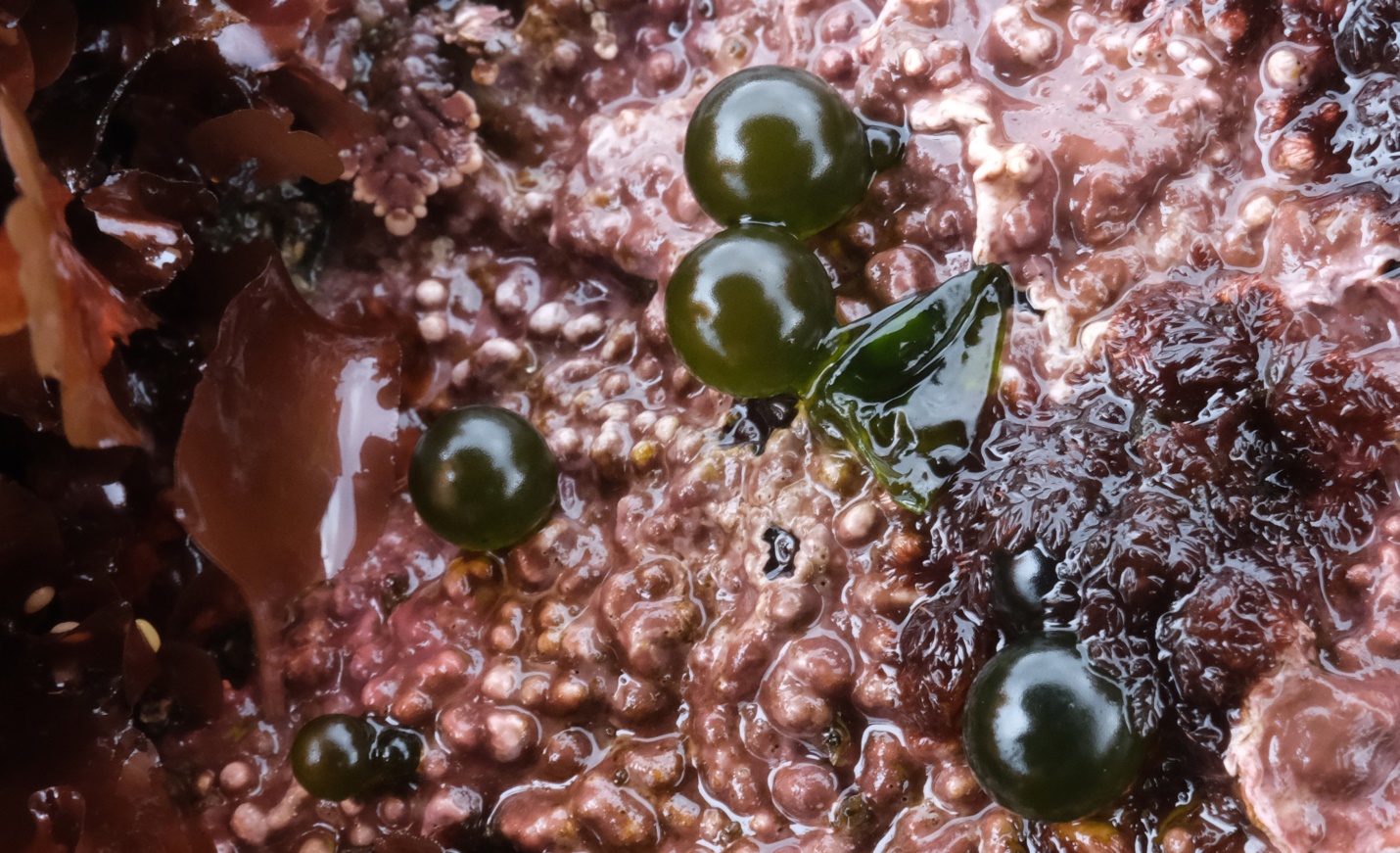
Figure 3: Perfect green spheres – the gametophytic expression of Derbesia marina; depending on your screen/viewer, you are looking at this seaweed at about 2 ½ times life size! Botany Bay, Juan de Fuca Strait, B.C., Canada. May 17, 2022. Photo ID: 27218 ©Seaweedwhisperings.com
You are really quite tiny, compared to the other macroalgae growing here and this makes me wonder, do very many others note your presence?
How do you make your presence known?
As I explored another grouping of Sea Pearls I found the ‘skins’ of what must be burst spheres. These skins were almost colorless (only a tint of green left in one or two) and transparent.
I question now, why did you burst?
Do you grow and grow and grow and with your green skin capable of stretching only to a certain tolerable thinness, and then, if the ‘growth/expansion’ urge doesn’t stop, then your perimeter skin must fail – bursting the perfect green sphere of algae.
And do you burst when mature or ‘ripe’?
Is that the whole goal of your expansive, 360 degree growth?
Do you burst once something has been achieved within your perfect green sphere and then that something is not meant to be ‘contained’ or ‘encapsulated’ any longer?
Bursting for this reason would be maturation and an impetus for dispersal. And this dispersal of ‘something’ is then a success, a grand result.
But it seems to come at some cost; there is nothing of your ‘spherical perfect self’ left save an empty colorless shell. Possibly that is totally fine and appropriate and desired.
But then I wonder, what next for you, Sea Pearls?
What else?
What follows?
Is there anything…?
Is mastery of “perfect little green sphere” all there is?
Does that which bursts from you go on to know another type of existence?
It feels to me that there is more for you, but it also seems that there is no clue, no indication of what that burst perfect sphere has led you to. It seems there is some urge, some drive, some motivation pushing you towards something, something else, something more. But in an ironic twist of ‘fate’ it feels like that selfsame urge / drive/ motivation towards what you are seeking gets you to that critical development, that ultimate step – the act of bursting, and then also that bursting erases, in an instant, that drive / urge / motivation and all memory of it.
So, where are you now, Sea Pearls?
What goes on for you after “the burst”; I really do wonder.
Your round shape, your perfect sphere, it really seems that most things roll right over or off of you. I don’t think you burst due to external factors, or if you do only rarely. No, I think the burst is driven by internal factors.
I wonder, Derbesia marina, can that also be your fear – that you might burst too soon, or be forced by some external factor to burst?
For such a tiny alga I note that you don’t actually look like a vulnerable bubble that could pop without some notable consequence. It feels that if the sphere bursts for the ‘wrong’ reasons, there’d be something very unwanted/disappointing happening.
Another consideration came to me; I thought of these tiny green spheres and their chronology, of when they appeared here on this coralline algae foothold of theirs. I got the impression it could be like one or two here, then a short while later another there, then after another shorter interval one, two, three, four and five here, here, here, and here…, and while counting in that one location, more spheres continue to pop into existence at several other spots.
At the sight of the first few Sea Pearls it felt delightful to see them, then as the progression of their multiplying numbers unfolded, my feeling went from wonder and delight to humor, and then it changed and moved on to a sense of dismay. The dismay was a sense that their appearance began to feel unstoppable, they just keep on coming. And something about their proliferation, their rapid increase in numbers, felt unwanted, not compatible with the surrounding community, a presence that had become unwelcome due to its increasing domination.
Why would that be?
What is it about Sea Pearls that can be so uneasy for others to abide with in comfort?
How must that feel for the Sea Pearls – that just when they seem to be doing so well, the environment around them and those in it becomes unfriendly and unappreciative of multitudes of perfect green spheres in their midst?
There is this clear association with the pink coralline algae. Derbesia marina seems to prefer and possibly even need this other algae as the host to its epiphytic growth. It seems that the knobs and buds and bumps of the coralline crusts could provide just the right anchorage and shelter to the very young Sea Pearls, and then also later not cause any hazards or obstruction to their continued individual growth.
This balance of shelter and room to grow is essential to Derbesia, therefore the association with an other, in this case the coralline algae, is essential too. This is where they find their foothold, where protection and a soft-or-round-edged-only kind of structure is given. It is here that Derbesia can flourish.
And when they flourish, the lovely perfect green spheres, they do so very well that outsiders could easily think this was all due to their solo efforts. But in truth, there is a strong and essential background of support, at least at the beginning, AND then the striking and gleaming Derbesia energy shines in such perfection that they appear self-made. Derbesia does not try to cover up their past benefactors/supporters but they can also easily supersede them, “steal the show” so to speak, and they can, given perfect conditions, go much further than their origins – but only by bursting.
Like the green ‘skin’ that is burst and takes with it the pressure and sphere-enlarging motivation, can Derbesia go on so far beyond its origins that no one recognizes them in their new form and setting? That they leave old associations and acquaintances behind and all are a bit bewildered by the sudden change? It seems that sometimes this can be so.
It seems also, that if Derbesia is not doing well, one key area to review is what shelter and protection had they lost or been separated from too soon? What sharp edges or other obstacles were incompatible to their growth?
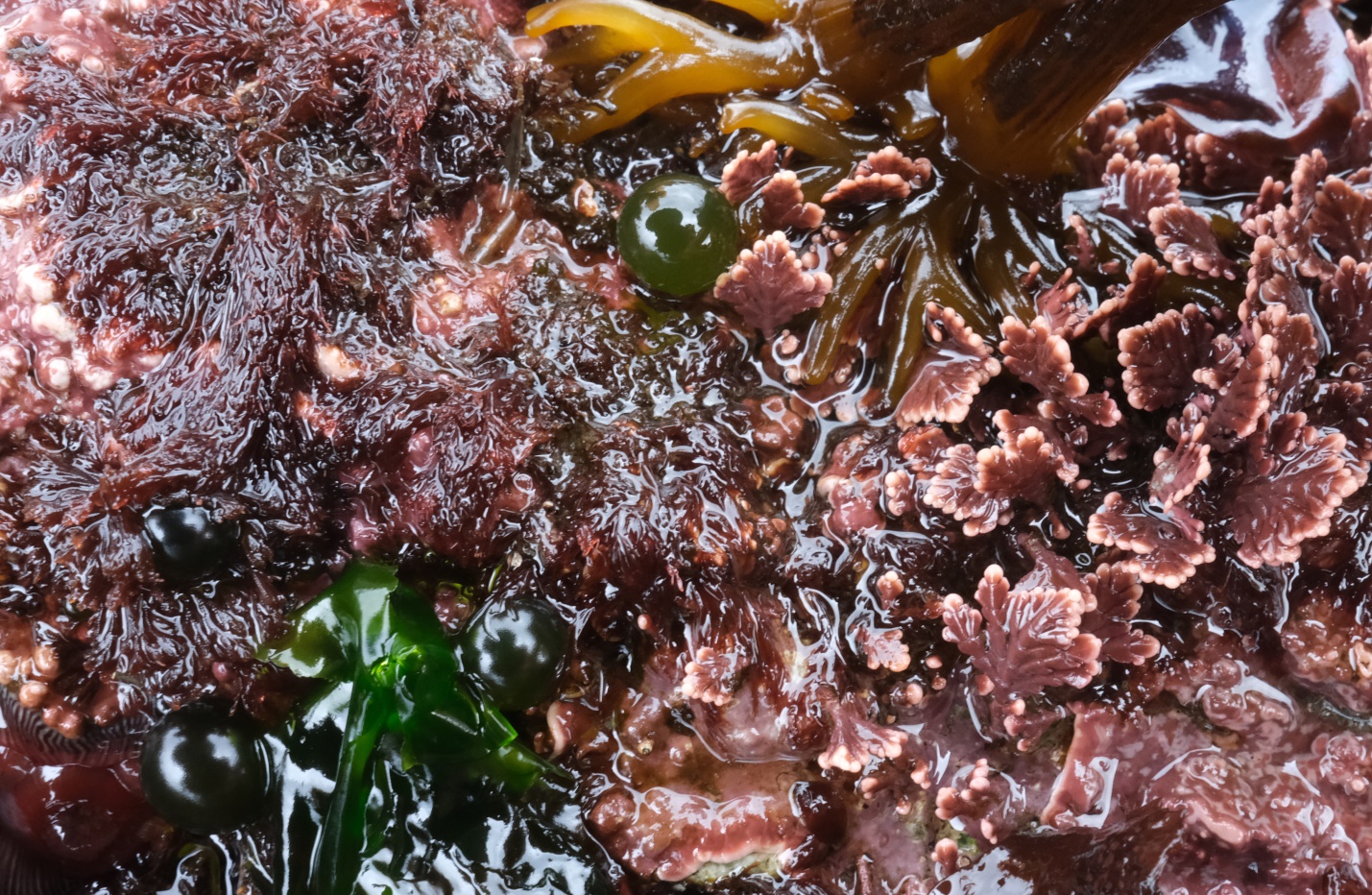
Figure 4: One Derbesia ‘sphere’ is quite readily visible here, but if you look closely at the lower left hand portion of the photo you will see others as well. This spherical morphology is the ‘large’ expression of this green alga’s life cycle; the other phase is an inconspicuous filamentous morphology with tufts consisting of branches not much longer than 1.5cm. So the sphere is the BIG expression in this seaweed! Botany Bay, Juan de Fuca Strait, B.C., Canada. May 17, 2022. Photo ID: 27215 ©Seaweedwhisperings.com
Discussion:
There is an initial sense that these green sea grapes accept their energy. An acknowledgement that they are perfect yet very different from others. Almost as if they are trying out a different way of existing from most of their neighbours but with that existence it feels as if they want acknowledgement for how perfect and clever they are for thinking of this spherical shape.
If they don’t get that acknowledgement, they can become increasingly frustrated in some way and either explode in frustration or keep producing more of themselves in an effort to be noticed and acknowledged as unique and important. Even their reproduction seems overly complicated, unique and somewhat risky.
They cannot rest; they keep pushing forwards until they explode when perhaps they will really need to reconsider whether this chosen way of being is correct.
Person 1 experienced pronounced abdominal distention and tension as a result of his interaction with this seaweed. It was a physical pressure build-up that reminded him of Derbesia – the feeling of a tense perimeter, wanting to burst, anxious, fear of the unknown, “what is this?” He imagined it could possibly feel like pregnancy, the pressure as you are ‘ballooning’.
This abdominal tension had a slow build to it; anxieties, pressures, tensions don’t instantly build to such a state, but there can be a slow build and then BOOM – explosion! To the outsider this may seem, or even is likely to seem, inexplicable. All of a sudden, after one more request, one added pressure, one new typical demand placed on the Derbesia individual and with no forewarning, it is simply too much – kaboom! Until the last straw is piled atop the proverbial camel’s back, that back is strong and doing its job just fine with little to no outward sign of distress.
So we asked, what is the “Derbesia way” to successfully avoid such explosions, to be ok with tension, to handle pressures or anxieties?
The answer seems twofold:
One – stay round and things roll off.
And two – don’t grow too big, so that there is still softness and flexibility on the perimeter.
The Derbesia marina solution then, in short – “keep flexible and let things roll off…”
One other physical symptom which revealed itself as relates to this seaweed is that of bursitis. On the day of our interaction with Derbesia marina, Person 2 slipped while doing some photography and various body parts impacted with the rock shelf she was exploring. The hardest ‘hit’ was taken on the right elbow. At first, only signs of bruising were evident, but later, slowly it became clear that the bursa had been traumatized and a swollen, reddened, perfectly circular bursitis developed. But for the red color, this physical manifestation was strikingly similar to the seaweed.
Our general observations about the pretty green Sea Pearls is that in them pressure builds up slowly to a perfectly rounded/spherical shape. And that when such a condition is reached where little ‘flexibility’ remains on the surface of the sphere, then only ever so gentle touch, even ‘silky’ light touches (as one common name for this seaweed suggests) is tolerable, and even that is not really desirable. Notable also is that the joint whose bursa has been injured is then disabled; it has lost its ability for full motion, and certainly for painless motion. So, ‘movement’ is impaired or greatly reduced and contact must be very gentle until such time as the internal pressure has somehow been resolved. Derbesia then needs a fixed base, does best with “solid and steady” as their background; this means that there won’t be any forced stretching or unwelcome movement beyond, of course, what Derbesia initiates for itself.
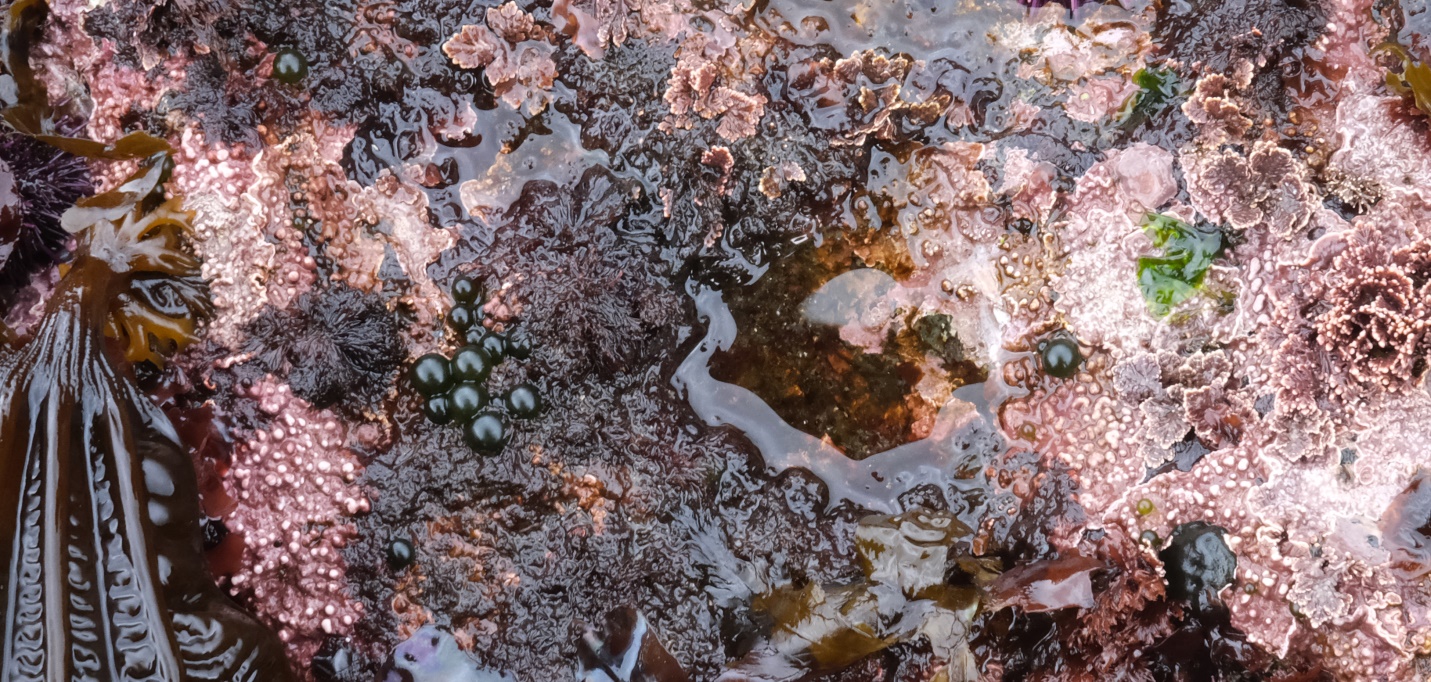
Figure 5: Look closely – there are at least twenty different green Sea Pearls/Green Sea Grapes in this photograph; some are no more than 2 or 3 mm in diameter and the largest are between 8 to 11 or 12 mm in diameter. Botany Bay, Juan de Fuca Strait, BC, Canada. May 17, 2022. Photo ID: 27216 ©Seaweedwhisperings.com
Biology & Natural History Information:
Description:
This seaweed has a life cycle that consists of two distinct morphologies. The thallus of this green alga in its most conspicuous phase is a hollow, spherical ball with a short stalk. This is the gametophytic phase in the life cycle of this seaweed. Individual spheres usually grow to 10 mm (1 cm) tall/diameter. The inconspicuous sporophytic phase of the Derbesia life cycle, entirely different in its morphology, grows also on average to 1 cm tall.
Habitat:
Occurs in the very low to subtidal zone (to a depth of 20 meters or more) and can be attached to sponges, shells, other algae and man-made docks or floats on semi-exposed and exposed coasts, notably where there is strong water flow. The spherical gametophyte phase grows on crustose coralline-covered rock surfaces or on other organisms.
North Pacific Coast Distribution:
Aleutian Islands, Alaska to Baja California, Mexico; Korea; Japan; Russia.
Remarks:
The sprorophytic phase of Derbesia marina grows as tufts of siphonous, blunt-tipped filaments that branch only periodically; sprinkled here and there on these filaments are the tiny ovoid structures within which the spores are produced. Under appropriate conditions the spores grow into the ‘Halicystis’ phase, the more easily distinguishable and conspicuous spherical vesicle. The spherical phase produces sexual gametes fortnightly, and once fused these gametes, in turn, initiate once again the spore-producing filamentous stage. The green spherical phase produces either male-like or female-like swimming gametes. The swimming gametes are released when the spheres explode; the gametes fuse in the surf zone and settle out to grow into the filamentous phase. Meanwhile, over the next two weeks, the previously burst sphere is repaired and re-inflated and more gametes are produced.
The spherical, gametophytic phase of Derbesia marina used to be called Halicystis ovalis before the full life cycle of this single species was understood.
The genus name, Derbesia, is given for Alphonse Derbes, a French phycologist.
Another common name for Green Sea Grapes or Sea Pearls is Silky Thread Weed – the different descriptors these names employ illustrate very well the striking contrast between the two phases of this seaweed’s life cycle.
Classification:
Phylum: Chlorophyta
Class: Ulvophyceae
Order: Bryopsidales
Family: Derbesiaceae
Genus: Derbesia
Species: Derbesia marina (Lyngbye) Solier 1846
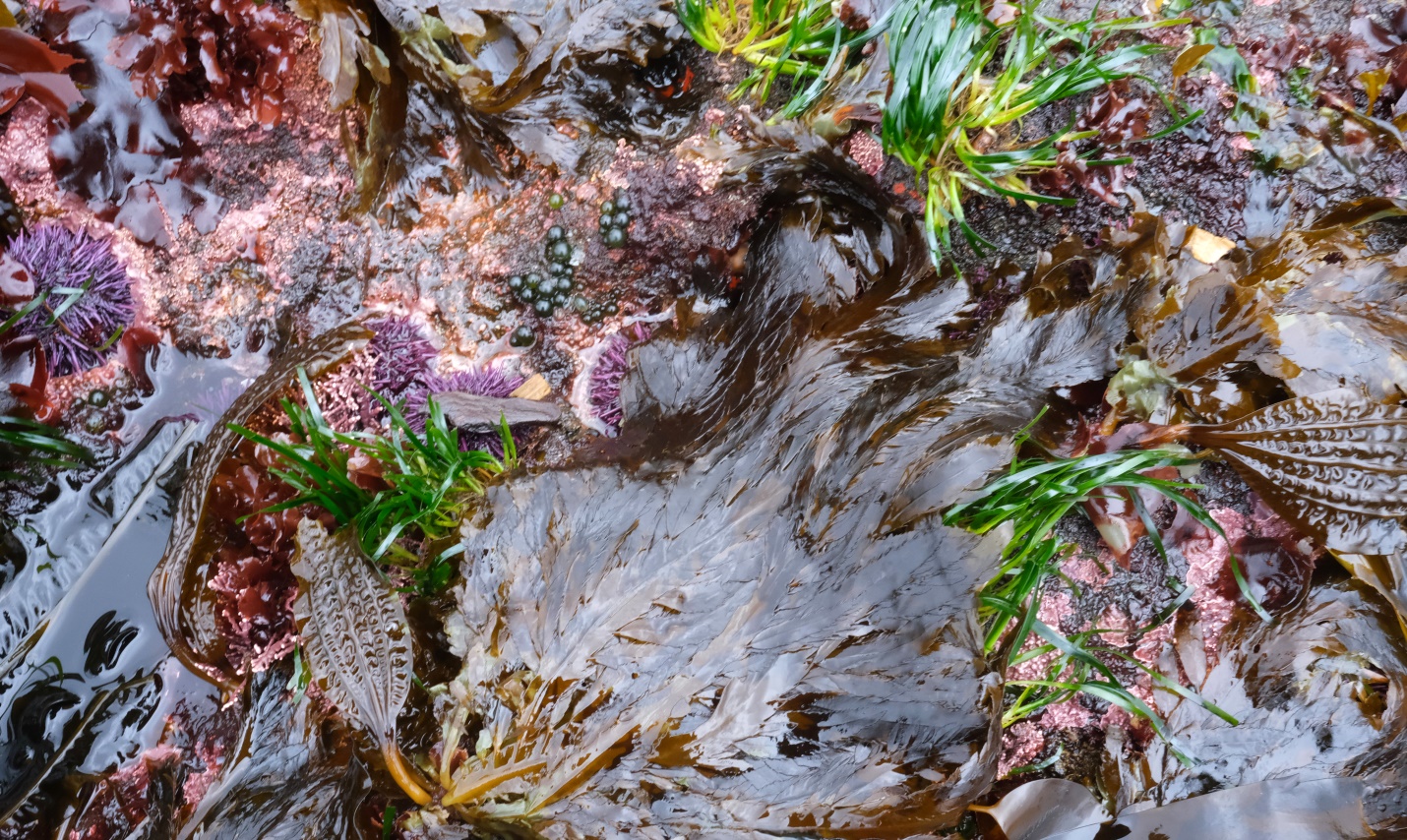
Figure 6: In perspective, with other marine macro algae and marine invertebrates, the Green Sea Grapes may be small in stature but they present a notably different life strategy. Botany Bay, Juan de Fuca Strait, B.C., Canada. May 17, 2022. Photo ID: 27217 ©Seaweedwhisperings.com
![]()